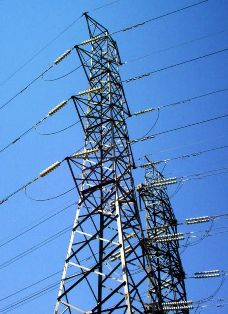 A study by Eurelectric, the Brussels-based electricity industry union, analysed the impact of different demand-side and supply-side policies in four scenarios up to 2050 named: Baseline, Efficiency; Supply; and Role of Electricity.
A study by Eurelectric, the Brussels-based electricity industry union, analysed the impact of different demand-side and supply-side policies in four scenarios up to 2050 named: Baseline, Efficiency; Supply; and Role of Electricity.In the report, The Role of Electricity: A New Path to Secure, Competitive Energy in a Carbon-Constrained World, Eurelectric said the Baseline scenario, based on current policy is unsustainable. The Supply scenario, based on optimising electricity generation to emit less greenhouse gas, foresaw significant increases in nuclear electricity (dubbed a 'nuclear renaissance') and carbon capture and storage. The Role of Electricity scenario envisaged the use of all possible measures, including the use of electricity for uses traditionally dominated by combustion of oil and gas, such as in plug-in hybrid cars. This kind of expansion in use would lead to increased electricity demand, all of which would be required to come from low-carbon sources.
Is the 'Nuclear Renaissance' Real?, a separate report by Cambridge Energy Research Associates (CERA), said that governments and businesses around the globe have moved from talking to taking real action to renew the development of nuclear power and have created "good prospects for a major nuclear expansion over coming decades."
The factors at play, said the report's authors, have been high fossil fuel prices, energy security and climate change concerns. Because nuclear power provides baseload electricity while diversifying the fuel mix, "Governments and businesses are taking action. The 'nuclear renaissance' is real."
CERA concluded that there are hurdles for the nuclear renaissance in the form of short-term tightness in the uranium market and a shortage of nuclear-grade component manufacturing capacity, but that climate change policies support nuclear expansion. A statement added that: "Long-term scenario work indicates it is very difficult to curtail rapidly rising global carbon dioxide emissions without expanding nuclear power generation."
The study found that nuclear electricity's relative costs vary around the world: Areas with secure access to fossil fuels and no penalty for carbon emissions (such as northern China and Australia) would find those fuels more economic than nuclear, whereas fossil resource poor areas (like France and Japan) would find nuclear power cheaper.
Against this, CERA said that in the North American context that construction costs of $2200-$2550 per kW would see nuclear compete with natural gas where that fuel is priced at less that $6 per Btu.
Further information
Cambridge Energy Research Associates
Eurelectric
WNA's The Nuclear Renaissance information paper




_91467.jpg)
_47120.jpg)

_23621.jpg)





